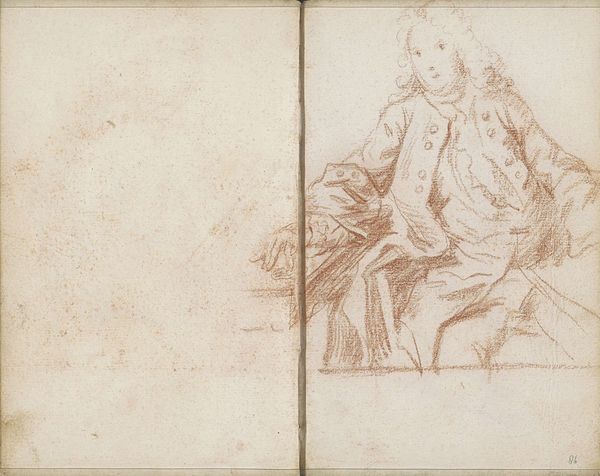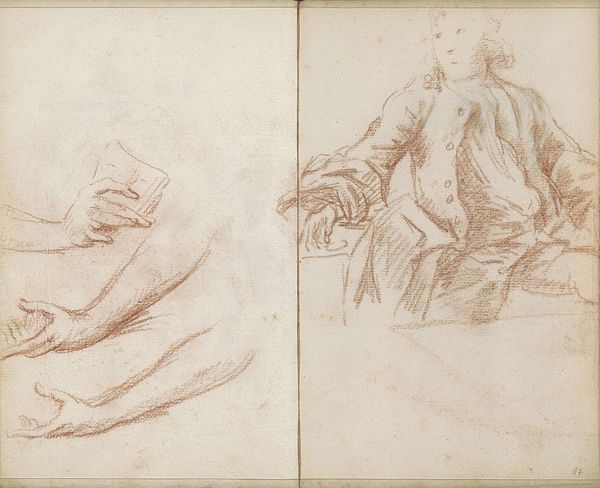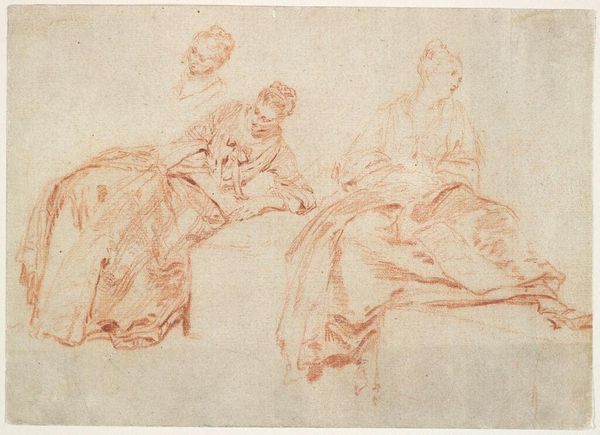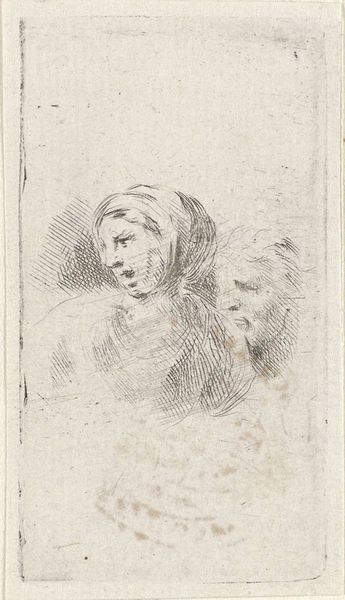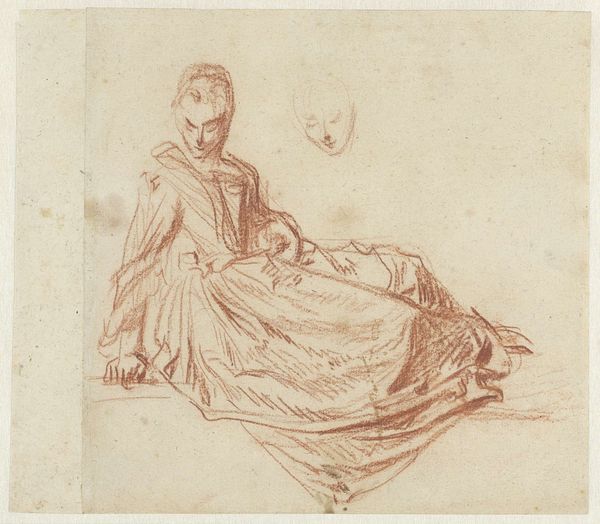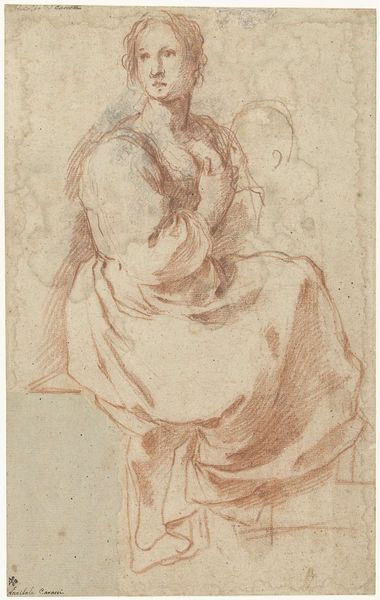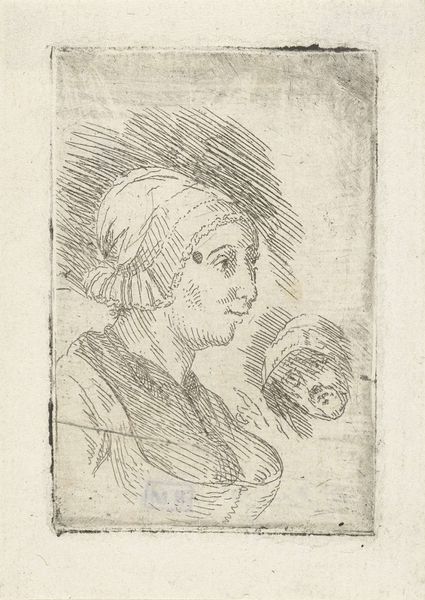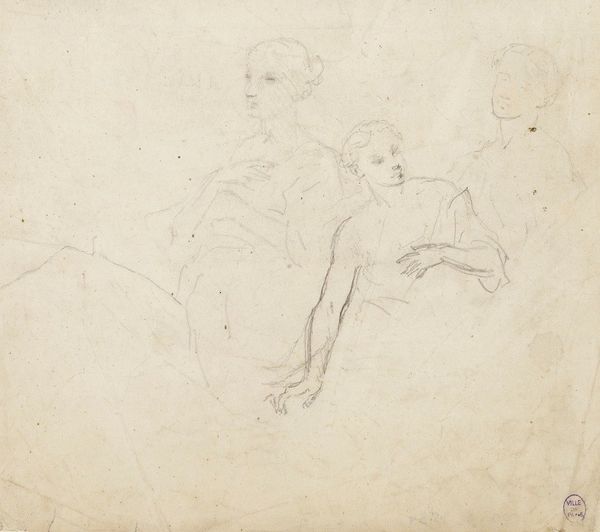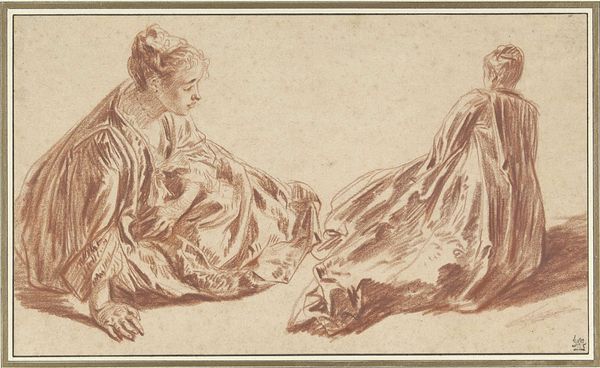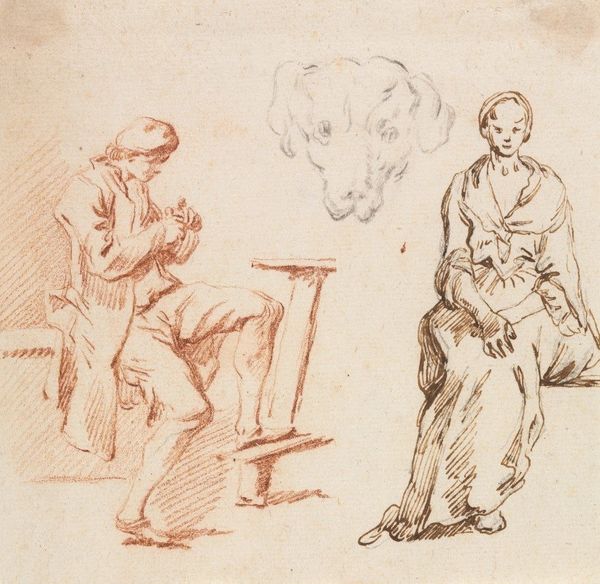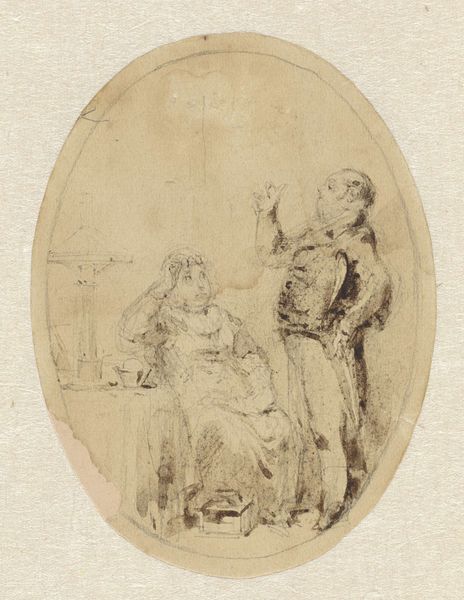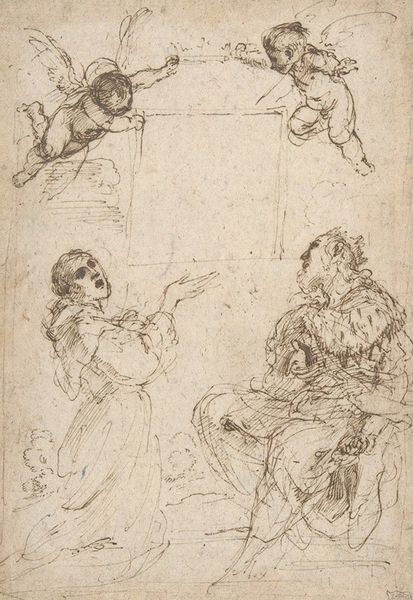
drawing, charcoal
#
portrait
#
drawing
#
baroque
#
pencil sketch
#
charcoal drawing
#
pencil drawing
#
group-portraits
#
portrait drawing
#
charcoal
Dimensions: height 274 mm, width 347 mm
Copyright: Rijks Museum: Open Domain
Curator: This arresting sketch at the Rijksmuseum is entitled “Portret van Grinling Gibbons en zijn vrouw,” rendered between 1670 and 1711 by John Closterman. Editor: It's striking! A powerful man confidently taking up space, while his wife fades into the background as if still emerging into the foreground of attention. Curator: Indeed. Closterman has worked primarily with charcoal and pencil, giving the drawing a layered quality that adds dimension while keeping an improvisational aesthetic. It appears the support may be thin paper given how it has aged. Editor: Right—and let's consider who Grinling Gibbons was. He was a celebrated wood carver in the 17th and 18th centuries, a master craftsman serving royalty! The elite consumed these specialized craft objects of elaborate and embellished wood carvings, which speak to broader socioeconomic issues, while the artists creating the carvings likely toiled in obscurity. Curator: Very good. Think about the production context: Drawings like this one were made using materials readily available at the time. The cost of charcoal versus paint is considerable. Its form would likely have served a preparatory purpose. Note also how Closterman's process leaves visible revisions and alterations in lines and shading, highlighting the labour of crafting the image. Editor: Yes, and the visual emphasis on Gibbons also echoes how his skilled labour would likely have overshadowed the contributions-- and perhaps even the personal aspirations-- of his spouse. Look at the difference in tonal depth; even if an early draft, it speaks to the marginalisation of women within even the skilled labor practices of that era. Curator: I agree. The composition seems to literally demonstrate the dynamics of power through spatial and material depiction, leaving much to be read on her social status within this skilled working family unit. Editor: Examining pieces like these allows us to appreciate and contextualise this art through a fresh perspective on class and labour, helping us connect with the subjects on a more intimate human level and confront legacies of power dynamics. Curator: Exactly, prompting us to investigate the materiality of art as the very foundation through which class and social constructs get negotiated and perceived.
Comments
No comments
Be the first to comment and join the conversation on the ultimate creative platform.
